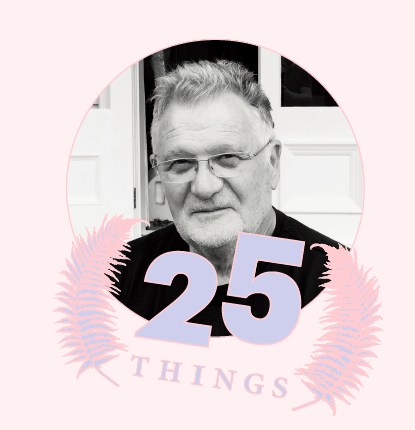25 things with Peter Haythornthwaite, part one

5 things you wish you knew before you started a career in design
My tertiary education at Elam and the University of Illinois was broad ranging and facilitated my career pathway. But clearly education cannot fully prepare a graduate for a yet to be defined profession – that comes through experience, relationships and learning.
1. Design integration
Through my reading and research at university I came to understand that design is a continuum. No one discipline is the hero. More so than ever, in our changing world, it will be prerequisite that all aspects of design dovetail together in an integrated and holistic manner. Products, services, brands, communications and behaviours will fail if they stand alone; integrated design enables them to strategically and harmoniously work across all touch points.
2. Success rarely happens by chance
Being good at the business side of design made sense. However, finances, staff securement, contracts, briefing, project planning, business structure and so forth were largely overlooked in college. It was when I became a full-time consultant that I came to really understand that good management is fundamental to good design practice. Fortunately I found these skills could be assimilated by seeking good advice and learning from one’s successes and mistakes.
3. Entrepreneurship and sound judgment
Entrepreneurship is ‘in’ a person. It’s an innate ability to identify opportunities and see ways to effectively fulfill them. Fortunately entrepreneurship can also be nurtured to become a competence. In the early 90s I advocated for universities to set up design-enterprise programmes. However, the recommendation was not taken up, perhaps because the entrepreneurial spirit is best acquired by iterative doing, not just teaching. Design enterprise must be underpinned by continuous improvement and good design judgment.
4. Goodness
We leave college with hope and a belief that there is always a better way, whatever the task. The reality is that other people in the project mix don’t always hold the same perspective; they do not necessarily share our behavioral and moral beliefs. By student designers being repetitively engaged in roleplaying the hard aspects of businesses, learning to listen and translate better, and to engage others in a cause, they would be better prepared for the commercial endeavors.
5. From their perspective
Going out with an impressive portfolio does not necessarily mean it will enable a client or an employer to understand your real value. I soon realised that to be more effective in sharing my proposition/story I needed to better understand their viewpoint. It meant listening and observing better so as to be more able to interpret their current state and what they were really saying.
While well resolved solutions were one part of my role, more sustainably important was the need to help clients understand that design was cultural and about continuous advancement. It meant guiding them to consider the unmet needs of end users, integrating design thinking throughout their business so they could be world-class and win in their chosen markets.
- Peter Haythornthwaite is speaking at Idealog’s Design Event on Friday May 18. Get your tickets here.




